

These Pretty City Maps Were Drawn By Our Paths Through Them. It’s no secret that tourists love to snap pictures on the Staten Island ferry.
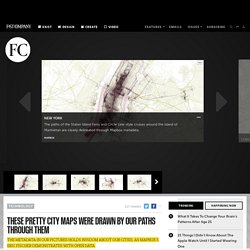
Or that photographers will wander the side streets of east London capturing the latest street art. Everyone knows that Paris’s visitor-friendly arrondissements are flooded with selfie sticks on weekends. PSFK presents the Future Of Cities. 7 Cities That Are Starting To Go Car-Free. After over a hundred years of living with cars, some cities are slowly starting to realize that the automobile doesn't make a lot of sense in the urban context.
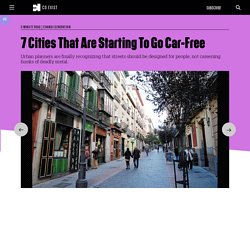
It isn't just the smog or the traffic deaths; in a city, cars aren't even a convenient way to get around. Traffic in London today moves slower than an average cyclist (or a horse-drawn carriage). 6 Major Design Trends Shaping City Life In 2015. Cities are the future.
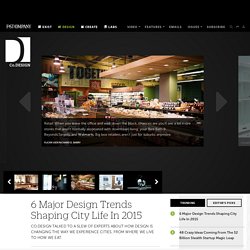
By one oft-cited statistic, 70% of the world's population will live in urban areas by 2050. But chances are, the cities of the future won't look quite like the places where we live today. It's up to designers—architects, urban planners, interior designers, and more—to ensure that the people-packed cities of the future are livable, prosperous, healthy places. This German Data Center Wants To Heat Your House With Its Servers. The data centers that power the Internet use more energy than the entire country of India.

Most of that energy is lost as waste heat. That fact inspired an idea: Why not use a network of servers to heat homes? Cloud & Heat, a cloud infrastructure company in Germany, stores server cabinets in houses and apartment buildings. While the servers crunch data, the excess heat is used to warm up the homes in the winter and provide hot water all year. The service has a second major benefit: a huge chunk of the energy used in data centers goes to air conditioning to keep the machines cool. Mapping New York's Vacant Lots, To Use Them To Create A More Vibrant City. “We’re living with ghosts,” says Paula Segal, executive and legal director at 596 Acres.
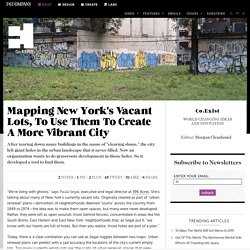
She's talking about many of New York’s currently vacant lots. Originally cleared as part of "urban renewal" plans—demolition of neighborhoods deemed “slums” across the country from 1949 to 1974—the idea was to make them open spaces, but many were never developed. Rather, they were left as open wounds (most behind fences), concentrated in areas like the South Bronx, East Harlem and East New York: neighborhoods that, as Segal put it, “we know with our hearts are full of holes. But then you realize; those holes are part of a plan.”
4 Whimsical Designs That Make City Life Just A Little Bit More Bearable. When Samantha Moore moved from Philadelphia to New York to attend the School of Visual Arts, she experienced a feeling she'd never really anticipated.
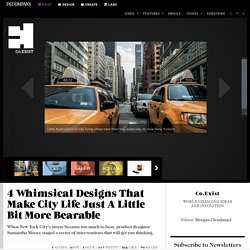
Little frustrations—an inexplicable 10-minute delay on the subway, someone winning a cab over her, a million little invasions of personal space—began to take their toll. They didn’t seem like coincidences. Together, they began to feel like the city was out to get her personally. Design Trust for Public Space. Francês cria modelo de casas pré-fabricadas que produzem 50% mais energia do que consomem. Building smart cities.